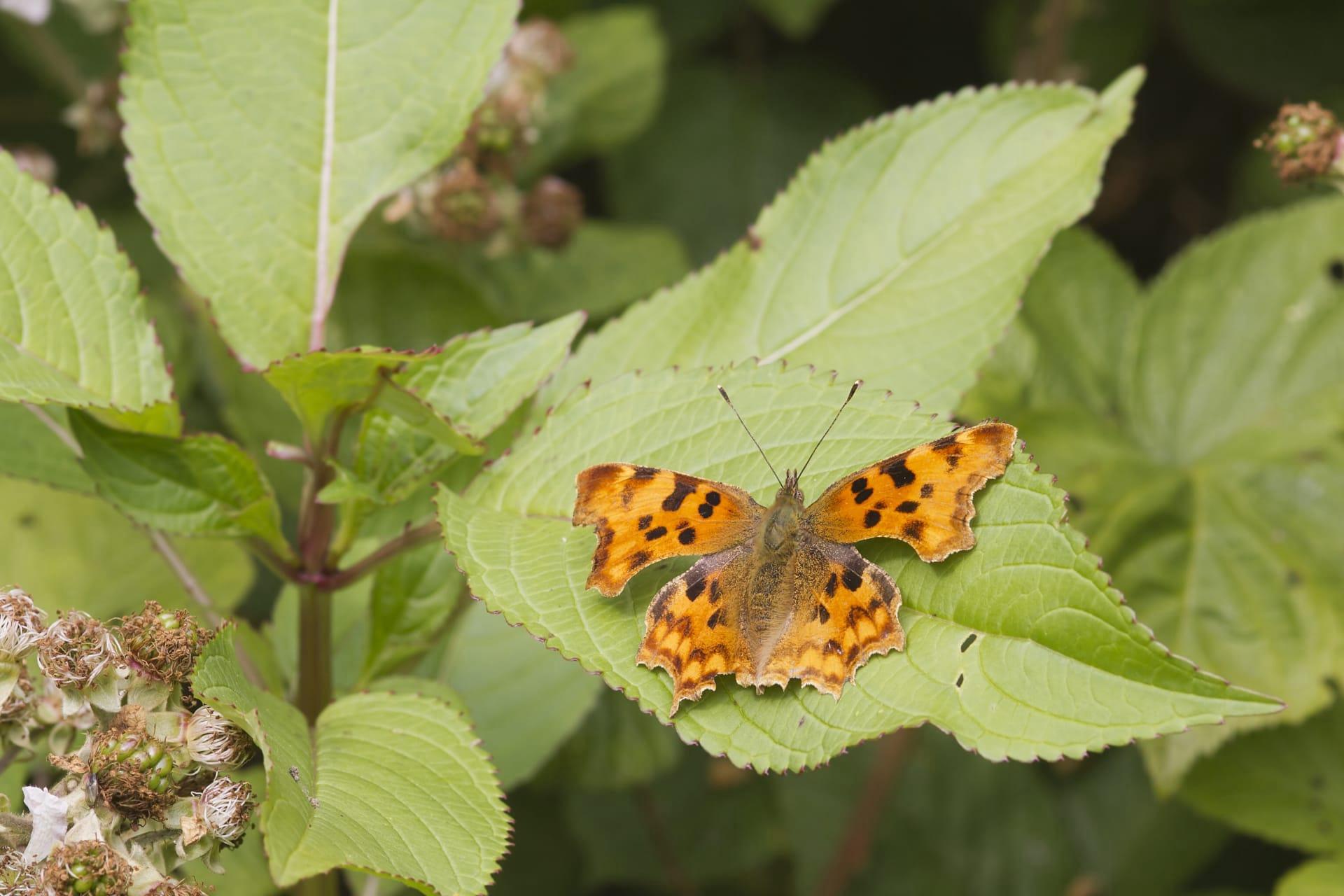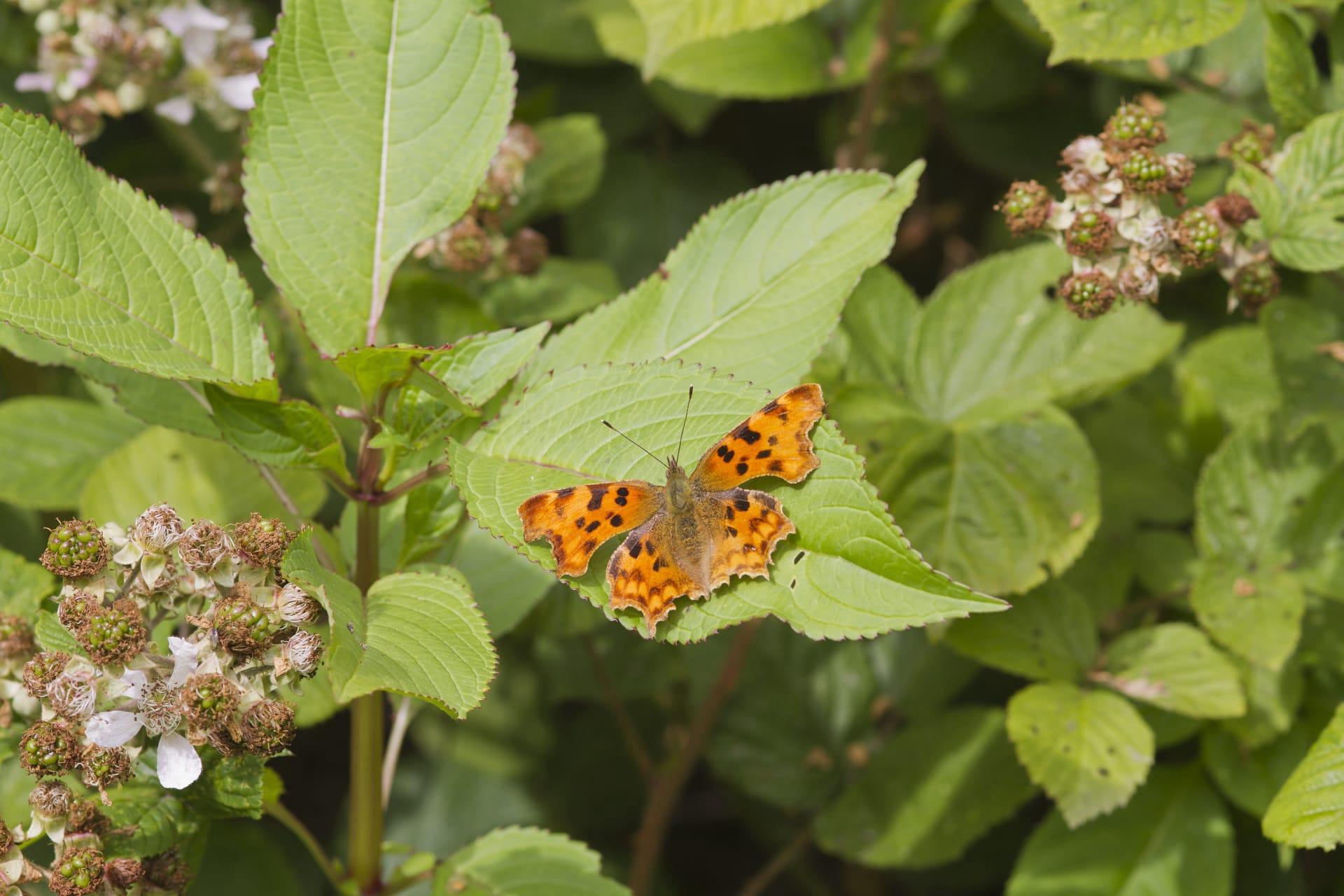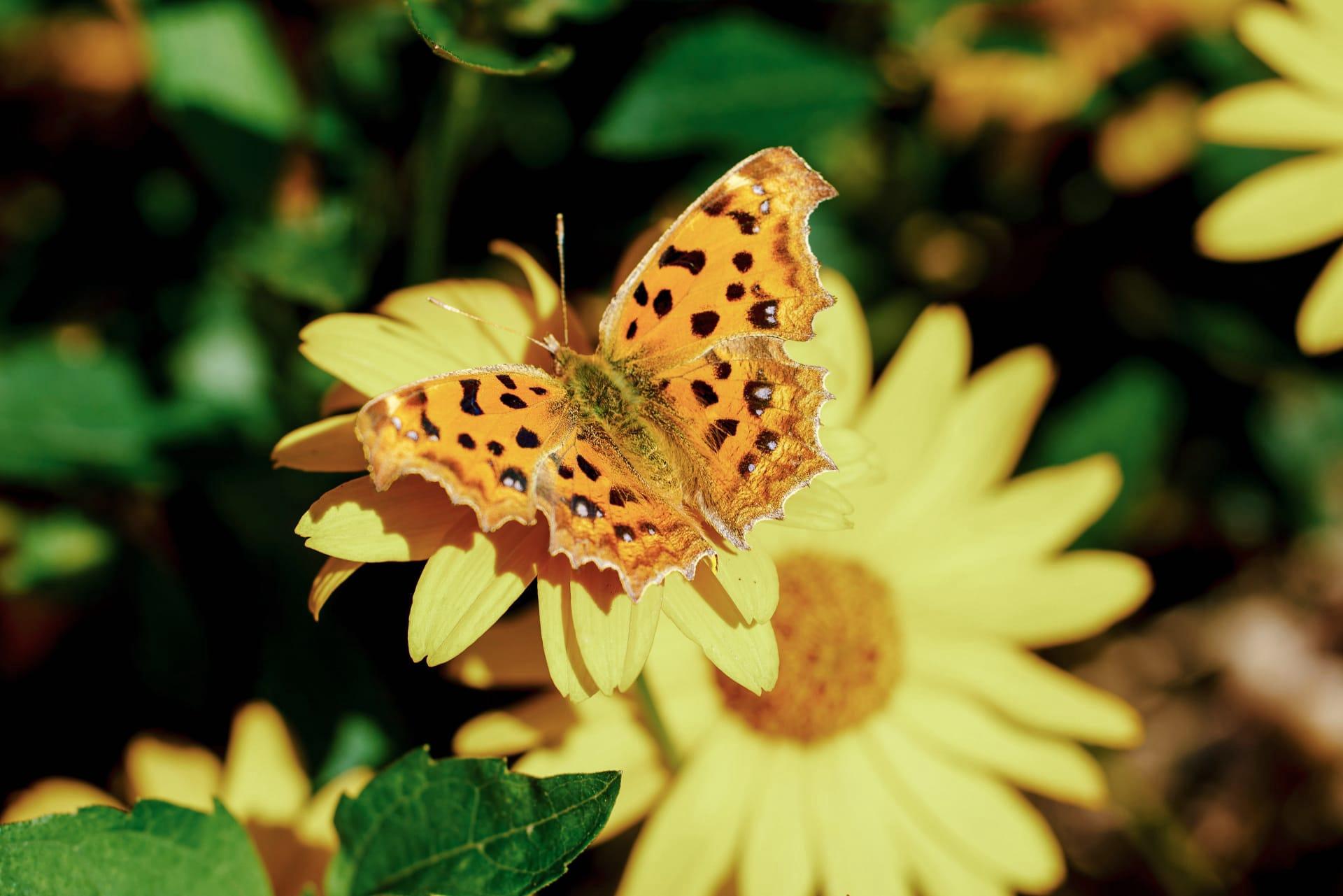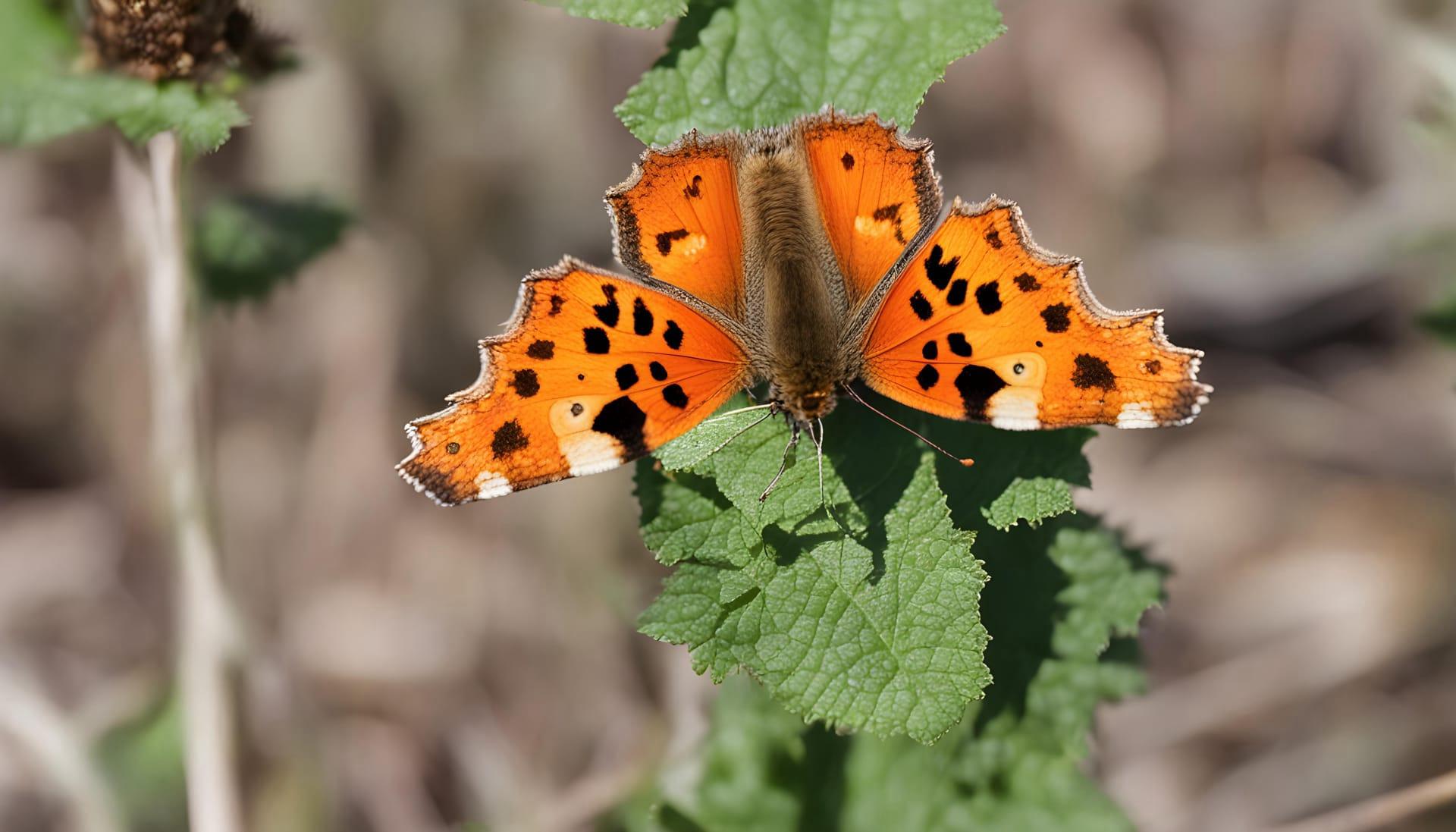Comma Butterfly Trivia
- Home /
- Trivia Question /
- Animal /
- Comma Butterfly Trivia
1
Question: What distinguishes the Comma Butterfly's appearance from other butterflies?
Answer: The Comma Butterfly, scientifically known as Polygonia c-album, is most recognizable by its unique wing shape and pattern. Unlike other butterflies with smooth wing edges, the Comma has ragged edges, mimicking a withered leaf. The wings span about 1.8 to 2.4 inches (45 to 60 mm) across. The upper side is orange with black spots, while the underside is a cryptic brown, with a small white 'C' mark giving it its name.
Question: How does the Comma Butterfly's diet change through its lifecycle?
Answer: As caterpillars, Comma Butterflies feed exclusively on stinging nettles and elm or hop leaves. This stage lasts about 2 to 3 weeks, during which they grow rapidly. As adults, their diet shifts dramatically to nectar from flowers, overripe fruits, and even tree sap. This change in diet reflects their transition from growth to reproduction and energy maintenance.

2
Question: Is it true that Comma Butterflies hibernate?
Answer: Yes, Comma Butterflies are one of the few butterfly species that hibernate. They spend the winter in a dormant state, often in hollow trees or crevices, emerging in spring. This hibernation allows them to live longer than most butterflies, with a lifespan of around 8 to 9 months.
Question: Are Comma Butterflies poisonous or harmful to humans?
Answer: Contrary to some myths, Comma Butterflies are neither poisonous nor harmful to humans. The caterpillars have a spiky appearance, which might suggest danger, but they are completely harmless. Both the adult butterflies and their caterpillars pose no threat to humans.

3
Question: What role does temperature play in the Comma Butterfly's life cycle?
Answer: Temperature is crucial for the Comma Butterfly, especially in egg development and hibernation. Eggs are laid in warmer months and require a certain temperature range to develop properly. Conversely, adult Commas enter hibernation as temperatures drop in the autumn, a process triggered by decreasing daylight and cooler weather.
Question: How does the Comma Butterfly contribute to its ecosystem?
Answer: Comma Butterflies play a vital role in their ecosystems as pollinators. While feeding on nectar, they inadvertently transfer pollen between flowers, aiding in plant reproduction. Additionally, as a prey species, they support local food webs, providing sustenance for birds and other small predators.

4
Question: Can Comma Butterflies be found in urban areas?
Answer: Yes, Comma Butterflies adapt well to various habitats, including urban environments. They are often seen in gardens, parks, and even in city outskirts, particularly where there are nectar-rich flowers and nettles, which their caterpillars feed on. Their adaptability helps them thrive in both rural and urban settings.
Question: Do Comma Butterflies migrate?
Answer: Comma Butterflies do not migrate long distances like some other butterfly species. They are generally sedentary and tend to stay within a localized area throughout their lifespan. However, they may move around to find suitable habitats for feeding and breeding, which can sometimes involve traveling several miles.

5
Question: How do Comma Butterflies protect themselves from predators?
Answer: Comma Butterflies employ camouflage for protection. The jagged shape of their wings, when closed, resembles a dead leaf, making them hard to spot for predators. Their brown, mottled underside adds to this effect, blending seamlessly with their surroundings when they are at rest.
Question: Are Comma Butterflies affected by climate change?
Answer: Climate change impacts Comma Butterflies in various ways, influencing their habitat, food availability, and breeding patterns. Warmer temperatures can lead to earlier emergence from hibernation, which might affect their survival if it doesn't align with the availability of food sources like nectar. Climate change also affects the distribution of their food plants, which can lead to shifts in their geographic range.